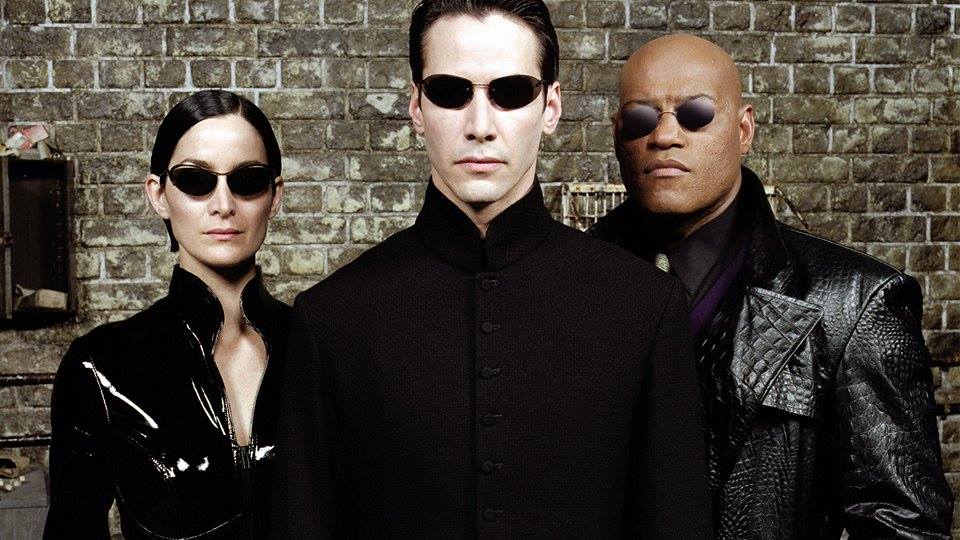
by Yanichka Ariunbold, staff reporter
Just recently, my friends and I organized a much-anticipated viewing party of “The Matrix,” an event that we had been planning for weeks with the help of countless of confused group chats (three words: red panda gifs), all of which thoroughly showcased our inability to both arrange social get-togethers and ask people’s permission before we decided by group consensus to host it at their house. Originally, we had wanted to do a depressing movie marathon, notable childhood traumatizers like “Bridge to Terabithia” and “March of the Penguins” among the suggestions. However, when someone brought up “The Matrix,” all our desire to endure hours of emotional pain died in the freezing cold Antarctic night — oh wait, that was the penguin babies from “March of the Penguins” that I’ll forever cry over — and was instead replaced by enthusiasm to see a refreshingly non-scarring childhood favorite.
Although it had technically been a while since any of us had seen “The Matrix,” most of us had grown up with it. It’s the type of movie that you can’t place exactly when you actually saw it, but you somehow know the whole plot and with its mention, fleetingly recall trench coats, slow-motion cartwheels in the air and sunglasses. Lots and lots of sunglasses. And yes, “The Matrix” is, in fact, rated R, but it’s widely considered as a more PG-13 type movie by viewers, with only non-graphic sci-fi violence and brief language to account for its intimidating rating. In other words, there are quite a bit of fistfights and fancy bullet action, but very little blood and gore.
In the movie, Thomas Anderson (played by Keanu Reeves), a computer programmer that goes by the alias of “Neo” as his expert hacker persona, is contacted by a group of leather-clad, sunglass-donning (and generally really cool looking) rebels. Their leader, Morpheus (played by Laurence Fishburne), reveals to Neo that the world he lives in, the Matrix, is a false reality used to pacify humans so that in real-time, artificial intelligence machines can easily harvest people’s bioelectricity as a power source. Targeted by Agent Smith (played by Hugo Weaving) and the other deadly sentient AI programmed to guard the Matrix, Neo joins the rebel movement, struggling to define himself within the separate realities and live up to the expectations of the group.
It’s not by some accident that “The Matrix” is one of the most beloved action/sci-fi films out there. While we couldn’t help but snort at Keanu Reeves’ absurd kung fu poses, not to mention the painfully rushed romance and subsequent Sleeping Beauty-esque kiss, we were thoroughly entertained. I mean, for example, the concept of “The Matrix” is timeless. I think everyone secretly wonders whether their world is real, be it the 90s New York that’s the setting for the movie or 2015 College Station. It’s a part of what makes the movie so profoundly engaging for all generations and why it’s still revered today.
Along with the idea, the visual aspect of the movie is absolutely stunning, particularly for its being released in 1999. Its portrayal of cyberspace markedly imaginative as well, the special effects in the legendary fight scenes, complete with physics-defying acrobatics and the indestructible Agents, still gave me goosebumps like they did when my brother and I gaped at them with utter awe years ago. Especially, The Scene. You know which one. And though this time around I noticed Keanu Reeves’ rather unsatisfactory acting, the second Neo finally appeared with his signature trench coat and sunglasses, just looking so dang boss, my doubts were immediately cast aside, and I just simply stopped caring about any of the flaws, as many as there were. Wachowski Brothers, I see your trick…
All in all, it was such a treat to see a film that I’ve genuinely adored in the past because I got to be a little kid again for a while, reliving the way I used to excitedly watch the franchise with my brother (and his aggressive commentary) but at the same time, making new memories with some great people.
So if you haven’t already watched “The Matrix,” there’s a choice to be made: the red pill or the blue pill. You can take the red pill and watch this brilliant, classic action film because even if you aren’t entertained by its awe-inspiring action sequences, which you should refrain from overanalyzing and just, you know, enjoy, you’ll be moved to reflect on the tantalizing idea the movie offers, the suspicion you’ve had your whole life, that your world is just an illusion and nothing more. Or you can take the blue pill, live in oblivion, and never understand any of the references/spoilers (sorry) I’ve just alluded to. Your choice.
Lastly, some important questions you might have about the movie, answered by my fellow audience members:
Q: Did Neo really need to storm through security like that? (During that one scene. You know which scene. The Scene. With the lobby.)
A: Okay, I guess he could have used his Matrix-y powers from the start, but then he wouldn’t have looked so frickin’ awesome (I had to replace the original word that is commonly used to describe frickin’ awesome people).
Q: Wait, how can Trinity fight in those tight leather pants?
A: She can do what she wants, physics be IRRELEVANT in the Matrix.
Q: Most importantly, how do Morpheus’ sunglasses stay on?
A: No one knows.

